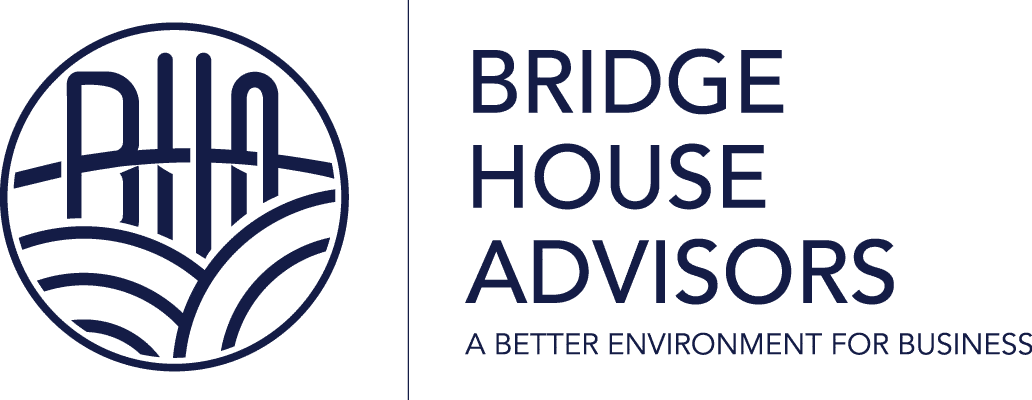The Road Well Traveled: An Employee Perspective
The Road Well Traveled: An Employee Perspective Bridge House Advisors is super proud of our…

Sustainability and ESG: A Portfolio Company Perspective
There is a long-established principle in achieving process excellence – “You get what you measure.” Does this principle hold true for sustainability programs and the requisite reporting requirements? Bridge House Advisors explored this topic in detail during a panel discussion with portfolio company clients and a representative from the ISSB (International Sustainability Standards Board). The diversity of the portfolio companies’ sectors — geotechnical construction & remediation, insurance, digital solutions provider – and participation by an ISSB member allowed the panel to explore key themes around priorities and materiality, as well as ownership and interaction with their private equity sponsors.
We Needed It – We Own It
One immediate alignment point from the panelists was that the overall sustainability program development for these portfolio companies was done largely on their own. Yes, financial sponsors may have planted the seed about the need for a strategy, but the catalysts for the formalization of the program came from other sources. At the very top of the list was customer expectations. Panelists noted that customer inquiries (some formal, like a CDP1 request) really got the attention of management, which led to formalizing the program.
Another driver to formalize the sustainability program was the workforce. One portfolio company noted that their leadership team was getting several questions during town hall meetings about ESG and how the company was addressing it. This company had a younger workforce demographic for whom sustainability tends to be more of a factor in choosing where they want to work. Additionally, this company had operations outside of the United States that made formalizing their individual sustainability program more important.
Another portfolio company highlighted the importance of their DEIB (Diversity, Equity, Inclusion, and Belonging) efforts within their overall sustainability program. Participants also noted that workforce demographics can play a role in adoption and “buy in” of the sustainability program and that while the success of a program does start with leadership, the program must have merit and meaning at all levels in the organization.
Panelists also indicated that reports and metrics are being passed along to the PE sponsors on a periodic basis. However, it was clear from the discussion that these companies developed sustainability programs because it made good business sense for them.
Some of This Looks Familiar – Some of This Does Not
If something is important, you will keep track of it. Aged receivables, days of inventory on hand, and days to deal close are all examples of core business metrics and reporting that were put in place because they matter. Back to the process excellence principle – “You get what you measure.” A realization the panelists commented on was that as they started building out areas of their sustainability program framework, they were all pleasantly surprised to find that in many cases important sustainability topics already had some type of initiative in place and existing metrics that could be readily gathered. Some examples included emissions for the geotechnical construction company, DEIB for the insurance provider, and business ethics and data governance for the digital solutions company.
The companies noted that as they established their respective frameworks, several other sustainability topics were emerging as priorities or quickly becoming table stakes for their success as a business. Areas of focus that would fall under Social and Governance topics required “practical programs” to be implemented, such as business continuity or human capital management.
On the other hand, the portfolio companies did note that when working through the frameworks for their respective industries they had to achieve balance by asking themselves “Is this topic operationally important?” versus “Does my investor think this topic is material?” While sustainability programs are not binary, answering yes to either or both of those questions will likely precipitate a reporting need. The methods of how the metrics are produced may be different given the catalyst of the reporting need, however. Regardless, reported information needs to be realistic, clear, and understandable. Further, a private equity firm might have standards beyond what the portfolio company is accustomed to tracking. It is important that portfolio companies and their financial sponsors reach clear agreement regarding reporting cadence, rigor, data collection, and assumptions before program sign-off and rollout.
More than Optics – It’s Good for Business
Fundamentally, the sustainability program developed for each company – what was in scope as well as what was out – is important to the financial and reputational success of the company. A successful sustainability program should have operational impact that can be tied and tracked to financial results. This can help prepare the portfolio company for an exit that meets or exceeds expectations. Back to the process excellence principle – “You get what you measure.” Otherwise, why are you measuring it in the first place?
Learn more about BHA sustainability strategy & reporting and other portfolio company services.
Post-Close Corporate Services – Bridge House Advisors
1CDP is a not-for-profit charity that runs a global disclosure system for investors, companies, cities, states, and regions to manage their environmental impacts.
The Road Well Traveled: An Employee Perspective Bridge House Advisors is super proud of our…
One Year at Bridge House: An Employee Perspective Bridge House Advisors is super proud of…
2023 Bridge House Advisors CEO Interview – Christer Setterdahl Welcome to the launch of Bridge…
